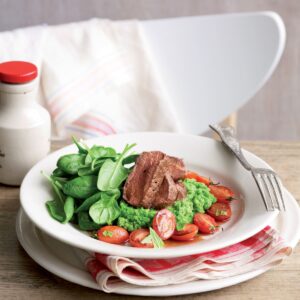
While stock can add great flavour to savoury recipes, it can also be high in sodium and vary greatly in taste and cost. HFG senior nutritionist Rose Carr compares a variety of readily available stocks to find the healthier choices.
What’s available?
Beef, chicken and vegetable stocks are the most often used, but we can also buy fish stock and a range of vegetable stocks with flavours such as chilli, mushroom, onion and green herb.
Stocks are available in powders and cubes or as a ready-to-use liquid stock. The powders and cubes are easily made into liquid stock by adding boiling water, although some recipes simply use the powder as flavouring.
What’s in stock?
Liquid stocks from the supermarket are mostly made from stock similar to one you would make at home from leftover meat and/or bones but usually other flavours are added. Ingredients such as glucose or sugar, yeast extract, soy sauce, herbs, spices, and sometimes colours and flavours, are used. The Essential Cuisine range is the closest to a very rich and flavoursome homemade stock. Their beef stock is made from roasted beef and beef bones, water and tomato paste and we like that it doesn’t have any added salt. The powdered stocks tend to have longer ingredients lists, at least in part because they need to include additives to make them keep and ensure they don’t solidify.
Sodium
Stock can be very high in sodium, and most of us get way too much sodium already. That’s why we always recommend using a reduced-salt or lower-sodium product where available. Be aware that some products may be lower in sodium even though they are not called ‘reduced-salt’. It pays to compare the nutrition information. For example: Campbell’s salt-reduced liquid vegetable stock contains 983mg sodium per cup; Massel chickenstyle salt-reduced liquid stock has 600mg per cup; but the Massel chicken-style powdered stock (no mention of salt-reduced) contains slightly less sodium at 544mg per cup. In recipes using a lot of stock, choosing a lower-sodium product is especially important.
To put it in context, while the average New Zealander consumes around 3500mg sodium each day, we’re advised to aim for a maximum of 2300mg. However, the suggested dietary target for good health is just 1600mg a day: that is less than the amount in three-quarters of a teaspoon of salt. Higher sodium intakes are strongly associated with increased high blood pressure and risk of heart disease.
Gluten
Anyone following a gluten-free diet will need to check the ingredients list as many stocks do contain gluten or are made on production lines where ingredients containing gluten are used. The Essential Cuisine, Massel and Vegeta products we found were all gluten-free and this was highlighted on the front of the packs.
Price
Price could well be a decider for you: the products we purchased ranged from just six cents a cup to $3.77 a cup. Powders are the cheapest option. Cubes that don’t need any measuring are a tad more expensive and liquid stocks are the most expensive. Although some varieties of liquid stock can be considerably more expensive than others, the trade-off is an intensity of flavour. Depending on what you are using the stock for, you may even want to dilute some liquid stock with water.
Taste
Some people won’t go near powdered stock, believing it to be inferior, so we did a blind tasting to get past those preconceptions. While most of the liquid stocks rated well, some of our blind tasters were surprised by the positive comments they had given some of the powdered products, most of which were quite acceptable.
Tips
- Always choose a lower-sodium version in the flavour you want.
- To reduce the sodium, dilute with water and add other flavourings such as white pepper, fresh or dried herbs or no-added-salt tomato paste.
www.healthyfood.com










